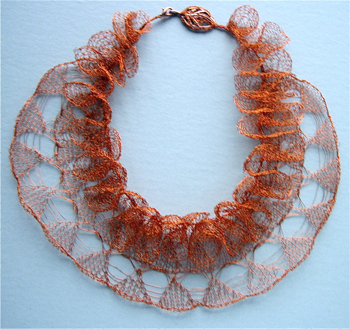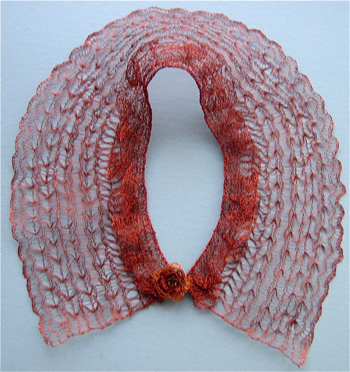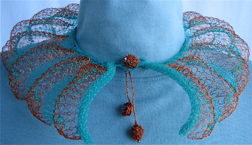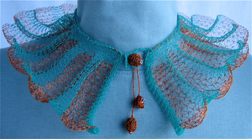In anticipation of the fiber invitational in Lowell and the annual Art to Wear show at Cambridge Artists’ Cooperative, the copper wire is resurfacing in new neck pieces. Some of the presently completed work may be seen below. Materials often come with their own stories. I purchased my nearly invisible wires from an elderly gentleman at a RI yard sale years ago for only a few dollars. He in turn had worked using them on TV and radio tubes in the “old days”. The 32 gauge version was obtained with the assistance of a brother-in-law-electrician. A beaded piece is “in the works”, and then there is all that colored telephone wire and a shoebox full of acupuncture needle cases periodically calling out to me… I tend to work freeform, without sketching, piecing elements and working out designs and problems as I go. There are elements of surprise for me as well in each piece I create.
The beginning of a new/different direction
 ladder lace and short rowed ruffles, modified commercial toggle closure
ladder lace and short rowed ruffles, modified commercial toggle closure
The finished collar tuck lace and ruffle collar; 4 strands of nearly invisible wire used throughout



